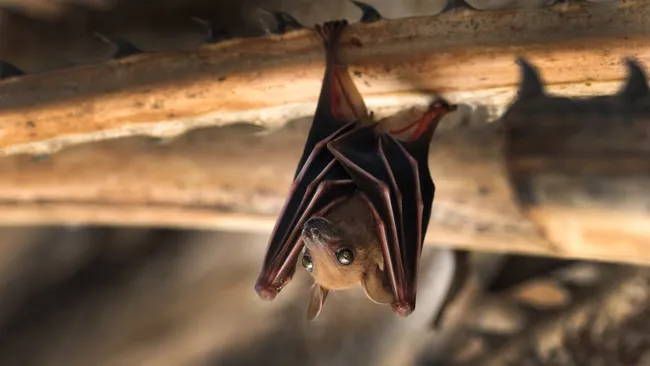When they’re not flying, bats often suspend themselves from cave ceilings or the undersides of bridges. But what makes them sleep upside down?
This peculiar habit likely stems from the evolutionary path bats followed to achieve flight, explains Tara Hohoff, a bat biologist and coordinator of the Illinois Bat Conservation Program. “As bats transitioned from land-dwelling mammals to airborne creatures, they initially relied on gliding, similar to flying squirrels,” Hohoff told Live Science.
The ancestors of modern bats may have scaled tall trees and launched themselves to glide between trunks, gradually developing strong limbs to aid in climbing, says Alexander Lewis, a bat researcher at California State Polytechnic University, Humboldt. Over time, these powerful limbs transformed into wings, he adds.
Unlike birds, bats lack hollow bones, which limits their ability to generate lift during flight. As a result, they still “hang upside down to drop into flight,” Hohoff explains.
While most people would struggle to hang from a surface—whether upright or upside down—bats do so effortlessly due to the unique structure of their muscles, tendons, and talons.
“When a bat roosts, it contracts the muscles linked to its talons, causing them to open,” explains Daniel Pavuk, a zoologist and chair of biology at Bowling Green State University in Ohio. “As soon as the talons touch the roosting surface, the bat relaxes, allowing its body weight to pull on the tendons connected to the talons.” This mechanism locks the talons in place, enabling bats to hang with minimal energy expenditure—gravity does most of the work.
Unlike humans, who would experience blood pooling in the head when upside down, bats are built to handle this posture for extended periods. Their compact bodies allow their hearts to circulate blood efficiently, according to the Iowa Department of Natural Resources.
As hanging upside down became their preferred resting position, it influenced other aspects of their evolution, Hohoff notes. For instance, “bat skeletons evolved to be lightweight for flight,” Pavuk adds. “Because of this, their leg bones are not well-suited to supporting their weight for long durations.” By roosting upside down, bats avoid putting strain on their weak legs.
This posture also provides a survival advantage. Perching in high, hard-to-reach places like cave ceilings helps them evade predators such as owls, hawks, and snakes, Pavuk explains. While bats can still take off from the ground, “it’s much harder than launching into flight from a hanging position,” he says.
However, not all bats exclusively roost upside down. “Disk-winged bats in Central and South America, for instance, have specialized suction cups on their thumbs, allowing them to cling to the undersides of leaves at various angles,” Lewis notes.
Further research into bat flight and their unique roosting habits could provide valuable insights. “Since bats are the only mammals capable of sustained flight, studying species that take off more easily from the ground could reveal fascinating anatomical differences,” Hohoff concludes.
